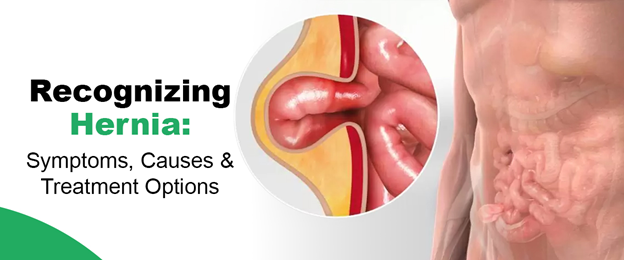Hernias might sound complex, but they’re quite common and affect many adults globally. Early detection is vital for managing them effectively. By being attentive and educated about how to detect hernia, adults can catch the signs early. This knowledge can lead to simpler, more effective treatments and a quicker recovery. Understanding the symptoms and knowing when to seek help can make a significant difference in one’s health journey.

Demystifying Hernias: Anatomy and Causes
Hernias occur when an organ or tissue pushes through a weak spot in a muscle or surrounding tissue wall. Ever wonder why some people are prone to hernias? Genetics can sometimes play a role. For instance, if hernias run in your family, you might be more likely to have one. Lifestyle factors, like heavy lifting or being overweight, can also increase the risk.
Different types of hernias exist, each with unique traits: 1. Inguinal hernia: The most common type, it appears in the groin area. 2. Umbilical hernia: This occurs close to the belly button. 3. Hiatal hernia: Found when part of the stomach pushes through the diaphragm. 4. Ventral hernia: Appears in the abdominal wall.
Understanding these types can help pinpoint symptoms more accurately.
Identifying Hernia Warning Signs and Symptoms
Recognizing the signs is crucial for knowing hernia how to detect effectively. – Inguinal hernias often show as a lump in the groin area or the side of the pubic bone. This bulge may be more noticeable when you’re upright or straining. – How to detect umbilical hernia? Look for a swelling around the navel. It’s often seen in newborns, but adults can get it too. – Hiatal hernias are trickier. Since they occur inside, look for heartburn, difficulty swallowing, or stomach pain after meals.
When to worry? If you notice vomiting, fever, or the hernia bulge becomes firm, you should seek medical attention urgently.
How Medical Professionals Detect Hernias
Doctors use a hernia physical examination to identify hernias. During the exam, they’ll check for bulges and feel the area to assess the condition. If the diagnosis isn’t clear, imaging tests like ultrasounds or endoscopies may be used. These tools help confirm the hernia type and gauge its severity, ensuring an accurate diagnosis and treatment plan.
‘Man vs. Woman’: Hernias in Genders
Understanding how hernias present in men versus women is vital. Men are more prone to inguinal hernias, which can cause visible bulges in the groin. Women may have less obvious symptoms, with more discomfort and pain. Since hernias can mimic other conditions, an accurate diagnosis is crucial to manage symptoms efficiently and ensure timely treatment.
Self-Examination Methods for Early Detection
Want to catch a hernia early? Here’s a simple hernia self examination guide for you. 1. Stand in front of a mirror in a well-lit room. 2. Gently press and feel the area around your abdomen, groin, and navel for any unusual bulges or tenderness. 3. Perform these checks while standing and lying down to catch any hidden signs. 4. Look for visual clues like any asymmetry or swelling.
If you find anything unusual or feel discomfort, it’s wise to talk to a healthcare provider. Keeping tabs on your body can make all the difference.
Why Timely Treatment is Essential: Potential Complications
Leaving a hernia untreated can lead to severe issues. Strangulation, where blood supply to the herniated tissue is cut off, is a major risk. Other complications can include obstruction, where bowel movement gets hindered. These conditions can be life-threatening. Timely medical intervention can prevent severe outcomes and help avoid complex surgeries, ensuring a manageable health journey.
Journey Through Hernia Treatment Options
Treating hernias starts with changes in daily habits. For those with minor symptoms, avoiding heavy lifting, wearing supportive wear, and maintaining a healthy weight are simple steps. When surgery is needed, minimally invasive options like laparoscopy can speed up recovery and reduce discomfort.
Laparoscopy involves tiny incisions and often results in quicker healing. Plus, success stories abound. Many have undergone these treatments and returned to their active lives, testament to the effectiveness of modern hernia care.
Wrapping Up: Key Takeaways for Lasting Health
Hernias are common, but with the right knowledge and vigilance, they can be managed effectively. Be proactive in recognizing symptoms and ensuring timely medical consultation. Routine check-ups and a balanced lifestyle are your best defense against hernias.
Remember, managing hernias is simpler with prompt attention and care. By understanding how to detect hernia and maintaining regular health practices, achieving lasting health is truly within reach.

